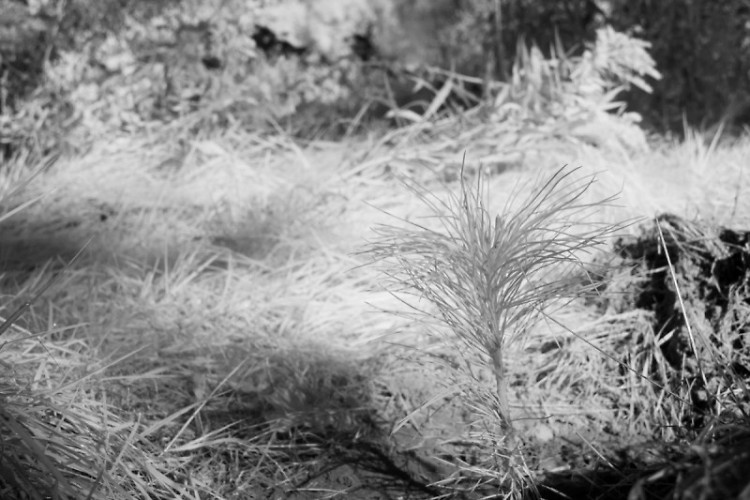You give up a lot when you start over. You let go of what’s familiar and move on to something unfamiliar. It takes a lot of work and perseverance to start over, especially to overcome the unknown.
I, along with a group of volunteers, recently assisted in planting 200 white pine trees at The Highlands. Up until a number of years ago, this site used to be a golf course, hosting yearly tournaments. Now, Blandford Nature Center and the Land Conservancy of West Michigan (LCWM) are partners in creating a nature preserve in the space. Planting trees is only a small part of the re-wilding process.
I have a special affinity for this location. I walked it for the first time after returning from a trip to the Scottish Highlands and noted some similarities between it and a nature park I had explored in Paisley. While visiting Scotland, I also explored a nature preserve and planted a couple of Hazel trees - a native species. All part of the efforts of this preserve to re-wild their site and entice the return of red squirrels, who favor the Hazel nuts. Exploring The Highlands and witnessing the work of the LCWM made me want to become more involved with restoring local habitats. Planting trees at The Highlands felt like a full-circle moment for me not only in conservationist efforts, but I can also visit these trees and watch their progress more often than those I planted in Scotland.
It was interesting for me to hear that the LCWM team had to look 1-200 years into the future - predicting weather and atmospheric conditions - to determine which kind of trees would survive and which ones wouldn’t. Each group of three volunteers rotated digging, planting and watering. So, I touched a couple of the trees, holding their root ball in my hand before placing it in the ground and packing the dirt around it. I carried buckets of water, collected from a nearby wetland pond, to add moisture to the ground around each tree’s roots. After watering all of the trees, we all walked away, leaving the foot tall trees on their own.
I often think about the little trees - how they were grown and raised by hand specifically to be planted to help create a healthy habitat - moving from a controlled environment to one that could potentially be hostile. I consider how each drop of rain or dew will be absorbed, as will the warm rays of the sun, especially as the temperatures continue to drop. Days will be filled with colorful sights and lyrical songs of birds and occasional voices of humans. At night, everything will appear like dark shadows silently slinking across the murky landscape.
Days will pass into months, growing stages into dormant and back again, seasons into years.
We planted so many trees because not all of them will make it. Some may not survive the trauma alone from transplanting. Disease may take some, unfavorable soil conditions may fell others. Some may grow and thrive for a time before ravaged by the weather. But some trees will persevere - they will weather the wind and rain and the ice and heat as seasons come and go.
One day, the surviving trees will stand taller than me and many years later, will tower over their neighbors of other species. When they come to the end of their day - they will have outlived me by decades, maybe even more than a century, all the while living life from a single spot. Their survival not only benefits all of us, but also shows us by example how to persevere against so many hardships. If these trees can survive, so can we, even in the rough “seasons” of life. When you start over, you sometimes sacrifice safety and comfort, because when you succeed, the potential reward is that much better for all of us.
The Rapidian, a program of the 501(c)3 nonprofit Community Media Center, relies on the community’s support to help cover the cost of training reporters and publishing content.
We need your help.
If each of our readers and content creators who values this community platform help support its creation and maintenance, The Rapidian can continue to educate and facilitate a conversation around issues for years to come.
Please support The Rapidian and make a contribution today.

